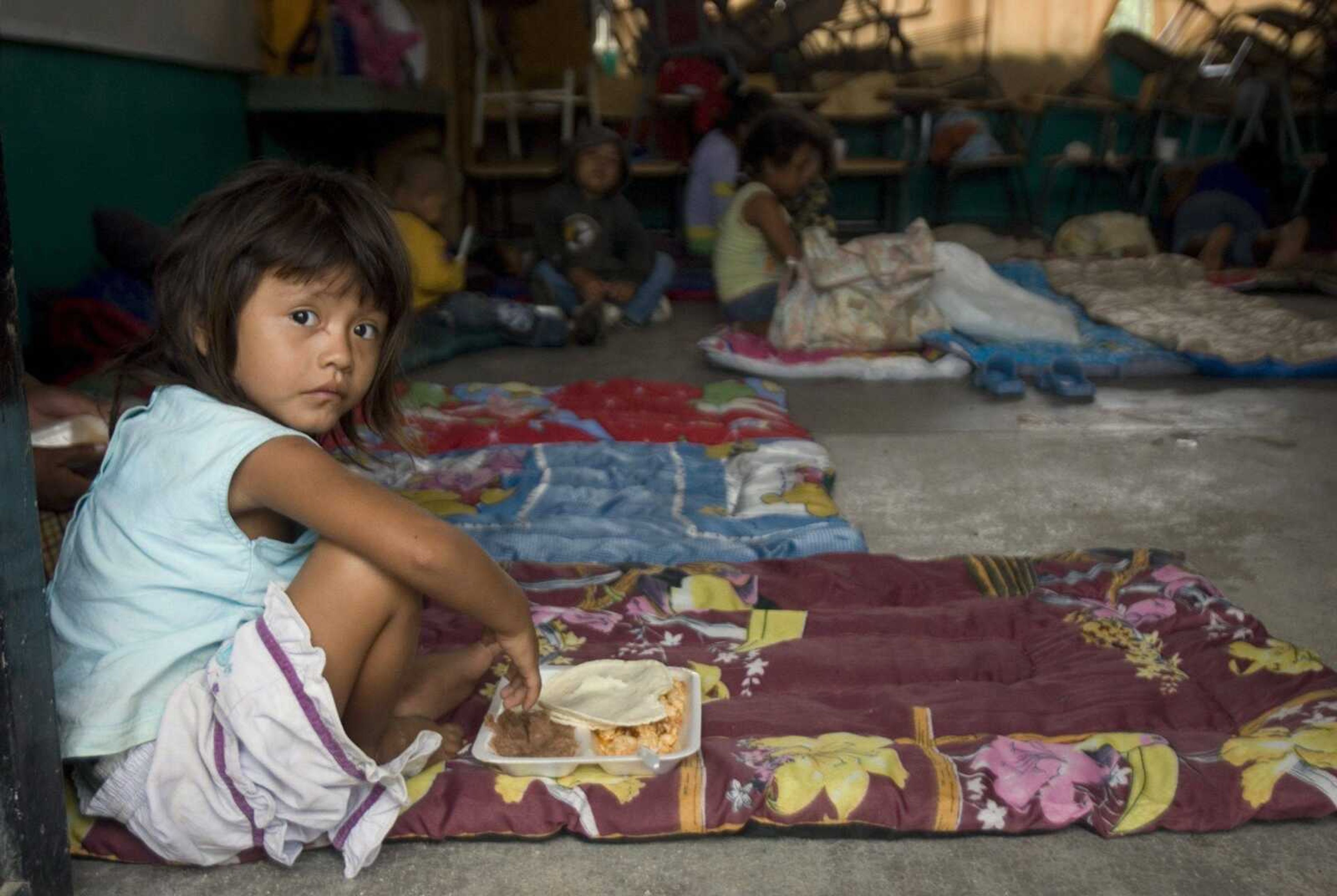Thousands evacuate in Mexico ahead of Hurricane Jimena
LOS CABOS, Mexico -- Heavy winds, battering waves and bands of intense rain pummeled residents and tourists in this vacation resort as Hurricane Jimena, one of the largest hurricanes this year, neared the coast Tuesday. The center of the roaring Category 4 hurricane was on course to pass west of Los Cabos late Tuesday or early today, close enough to punish the picturesque beaches and fishing villages that fringe the harsh desert...
LOS CABOS, Mexico -- Heavy winds, battering waves and bands of intense rain pummeled residents and tourists in this vacation resort as Hurricane Jimena, one of the largest hurricanes this year, neared the coast Tuesday.
The center of the roaring Category 4 hurricane was on course to pass west of Los Cabos late Tuesday or early today, close enough to punish the picturesque beaches and fishing villages that fringe the harsh desert.
Ashley Legeyt, 62, a retiree from British Columbia who lives in Cabo San Lucas, pushed through the oncoming storm onto an exposed rocky point where he leaned against the onslaught of the hurricane's outer winds.
"It's like getting sandblasted with water," said Legeyt, his back to the wind, sand and spray blowing in from the ocean. "It's quite strong."
The Mexican government declared a state of emergency for Los Cabos and the Baja California Sur state capital of La Paz and schools, many ports and most businesses were closed. Rescue workers from the Red Cross and the Mexican military prepared for post-hurricane disaster relief, and two Mexican Army Hercules aircraft loaded with medical supplies arrived.
Francisco Cota, head of Los Cabos civil defense, said that more than 2,000 people from low-lying neighborhoods and squatters' camps had sought refuge in shelters at local schools, and many more were staying with relatives in safer areas.
Another 5,000 people have been evacuated, and 159 shelters with a capacity for 29,000 people now stand ready, said state civil protection spokesman Luis Armando Diaz.
With the storm just 110 miles south of the city, most tourists had already fled by Tuesday, leaving 75 percent of hotel rooms vacant. But some of those who remained came out to see the storm with avid anticipation, fighting the winds and intermittent bands of rain at the shore.
Hurricane chaser Brian Osburn of Pensacola, Florida, stood on a beach in high-tech gear and protective padding while holding a plastic-encased, submersible Hi-definition video camera to take shots of the pounding surge and gusts.
"I think Cabo San Lucas is still in for a good blow," said Osburn, holding his waterproof microphone into the shrieking winds.
Others wandered the now-deserted streets, some ankle-deep in water, enjoying the storm.
"We're going to go, get some more liquor and go back to the room and just watch it," said Mark Lopez, 29, a truck dispatcher from San Jose, California, as he walked near a marina with a half-dozen friends. "We're making the most of it."
Many slum dwellers concerned about looting refused to leave their imperiled shanties.
Marco Nina, 24, a bricklayer, warily eyed a growing stream that rushed past his plywood and sheet metal home.
"We are here with our nerves on edge," he said. "If this hits, the roof is not going to hold. Other storms have passed but not this strong."
By Tuesday afternoon, Jimena had weakened slightly, with winds of 135 mph (215 kph), still a major hurricane with potential to do huge damage.
Local officials say Hurricane Juliet, also a Category 4 hurricane on a similar course that killed several people and caused $20.5 million in September 2001, was the most damaging hurricane in the storm-prone state's history. That 145-mph (230 kph) storm made a raging 12-day trip through Mexico and the southern United States.
On Tuesday, hurricane force winds extended as far as 45 miles (75 kilometers) and tropical storm force winds extended 140 miles (220 kilometers).
Hurricanes reach Category 5 at 156 mph (250 kph).
Farther out in the Pacific, Tropical Depression Kevin had top winds of 35 mph (55 kph) and was expected to weaken to a remnant low.
----
Associated Press writers Martha Mendoza and Julie Watson in Mexico City contributed to this report.
Connect with the Southeast Missourian Newsroom:
For corrections to this story or other insights for the editor, click here. To submit a letter to the editor, click here. To learn about the Southeast Missourian’s AI Policy, click here.








